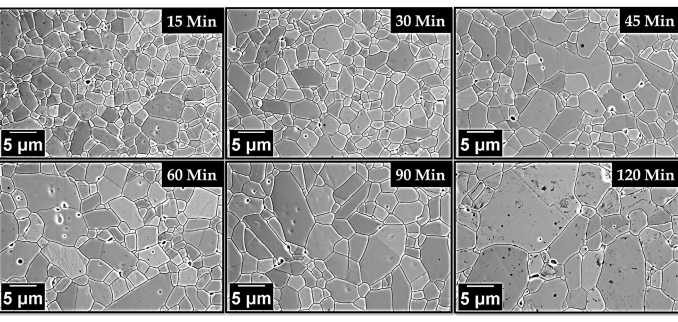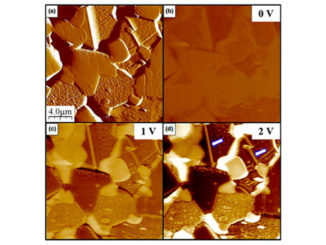
Author(s): Masteghin, Mateus G.; Bertinotti, Rafael C.; Orlandi, Marcelo O.
Abstract: This paper presents the results of a thorough study conducted on the action mechanism of one-dimensional single-crystalline SnO2 nanobelts in decreasing the breakdown electric field (E-b) in SnO2-based varistors. The proposed method has general validity in that our investigation was focused on the traditional varistor composition SnO2-CoO-Cr2O3-Nb2O5. To accomplish our study objective, two methods of decreasing E-b value were compared; one involving the increase in average grain size of the varistor through the sintering time and the other one related to the addition of nanobelts. The morphological results show that the method involving the increase in average grain size is limited by the formation of intragranular pores. Furthermore, despite contributing successfully towards decreasing the E-b value (which underwent a decline from 3990 V cm(-1). to 1133 V cm(-1) with an increase in sintering time from 1 h to 2 h), the reduction obtained by this method is found to be much lower compared to that obtained via the nanobelts insertion method (E-b = 270 V cm(-1)). Impedance spectroscopy results showed that the insertion of nanobelts caused a decline in the grain boundary resistance while surface potential measurements proved that this decline in resistance is attributed to the absence of potential barriers along the belts which leads to the formation of a lower resistance percolation path in the varistor.




